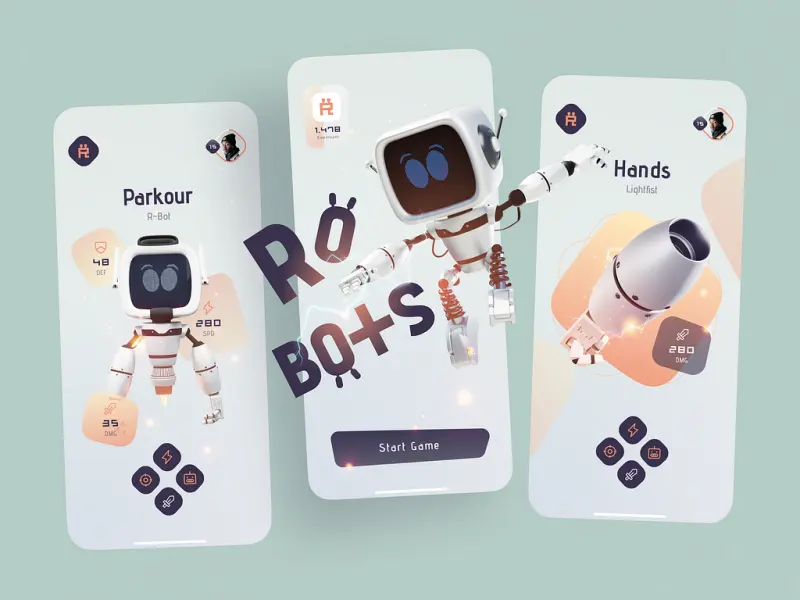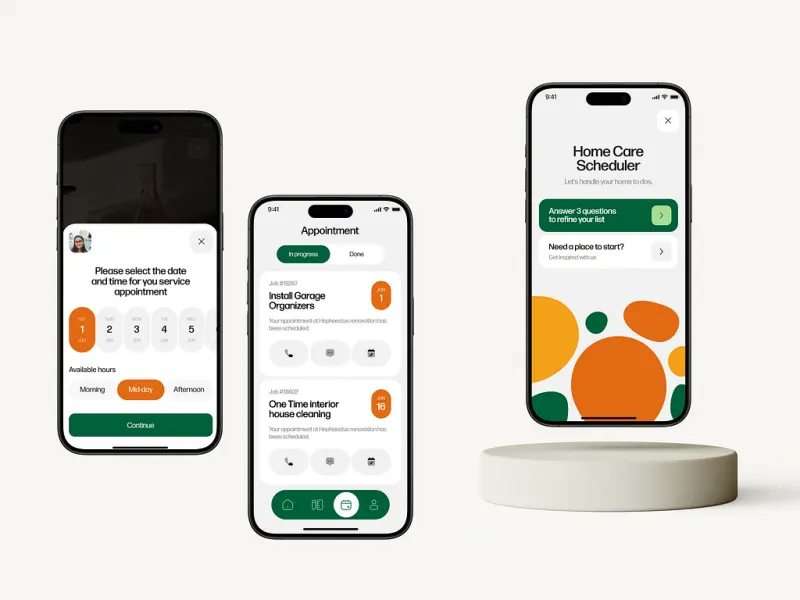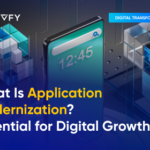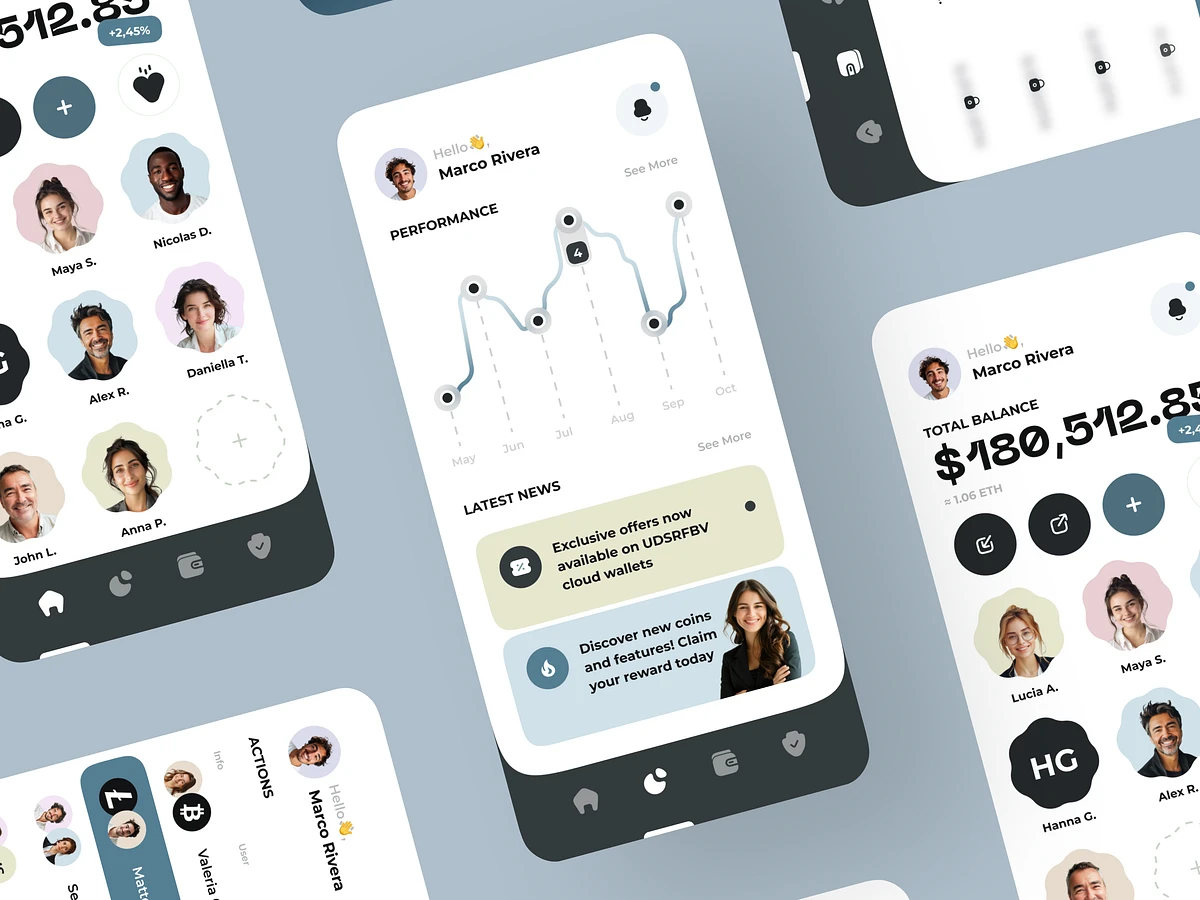Stay Ahead: Key Application Modernization Trends in 2025
- TECHVIFY Team
- 0 Comments
As digital transformation accelerates and customer expectations evolve, keeping your applications up-to-date has never been more critical. In fact, 83% of executives now view app and data modernization as a cornerstone of their business strategy. But how do you take the first step toward modernizing your apps effectively?
Start by staying ahead of the latest application modernization trends. Adopting these trends can transform your business, making it more agile, operationally efficient, and better equipped to adapt to market changes.
Top-performing companies don’t just modernize—they build their strategies around flexible, scalable, and innovative infrastructures. By leveraging emerging technologies, they gain a competitive edge while staying prepared for the future. Exploring these application modernization trends isn’t just an option; it’s an essential step toward unlocking your organization’s full potential.
I. Why Staying Ahead in Application Modernization Matters
Application modernization is more than just updating old software; it’s about transforming outdated applications into solutions fit for the demands of today’s digital landscape. According to industry insights, 87% of IT executives agree on the necessity of legacy app modernization.
Application Modernization Trends
But why is it so critical?
Modernizing core applications empowers businesses to adapt to current user expectations, enhance services, and tackle emerging challenges with confidence. Staying informed about the latest modernization trends equips you to navigate common obstacles effectively.
The results?
- Improved Scalability: Applications that grow with your business.
- Enhanced Security: Features designed to counteract modern threats.
- Seamless User Experiences: Intuitive interfaces that delight users.
- Simplified Maintenance: Easier updates, reducing technical overhead.
In short, application modernization is your gateway to creating a resilient, future-proof software infrastructure, enabling your business to thrive in the digital era.
More articles about the application modernization:
II. 13 Must-Know Application Modernization Trends
Planning your modernization journey starts with knowing what’s shaping the industry. From advanced tools to innovative practices, these trends can inform your strategy. While you don’t need to adopt every one of them, understanding their value will help you choose the best fit for your business goals.
1. Low-Code and No-Code Development: Empowering Faster Innovation
Imagine building applications without a deep technical background. That’s the promise of low-code and no-code development, a trend that’s reshaping how businesses approach app creation. According to Gartner, 70% of apps will be developed using these platforms by 2025. Here’s why they matter:
- Speed: Stakeholders can create functional prototypes quickly, leaving developers to enhance them.
- Filling the Developer Gap: With a talent shortage looming, these tools help automate simple tasks.
- Boosting Efficiency for Experts: Even seasoned developers use them to streamline workflows, freeing time for high-priority projects.
While low-code and no-code platforms have limitations, such as generating less refined code, they’re a game-changer for speeding up modernization efforts. Professional review can easily overcome these challenges, ensuring quality remains high.
2. Cloud-Native Development: The Backbone of Modern Applications
By 2024, 90% of all apps will be cloud-native, according to IDC. These apps, built with microservices architecture, deliver flexibility and efficiency that traditional approaches can’t match.
Why businesses are embracing cloud-native apps:
- Quicker Updates: Faster deployment cycles ensure your apps stay competitive.
- Cost Savings: Optimize resources while cutting operational expenses.
- Superior Flexibility and Reliability: Adapt to market demands while maintaining system performance.
One potential drawback is security. Public cloud solutions may pose risks for sensitive data, making hybrid cloud technology an ideal alternative. Combining the scalability of public clouds with the privacy of private systems ensures your data is secure without sacrificing performance.
Top Application Modernization Trends
3. Hybrid Cloud Technology: Balancing Security and Scalability
For organizations handling sensitive data where breaches could have dire financial or legal consequences, hybrid cloud technology offers a secure and flexible solution. This approach combines the scalability of public clouds with the enhanced privacy of private servers and clouds.
Hybrid clouds often leverage edge computing, enabling data processing to occur locally instead of over the cloud. For instance, companies using AI to monitor residents in long-term care facilities can process video footage on the device itself. This reduces the risk of data interception while preserving privacy—an essential feature in environments where security is non-negotiable.
4. Progressive Web Applications: Bridging Web and Mobile Experiences
Progressive Web Applications (PWAs) are revolutionizing how applications function across devices. Accessible on any internet-enabled device, PWAs deliver a seamless experience whether on mobile or desktop.
Key advantages of PWAs include:
- Faster Loading Times: Users experience near-instant access.
- Optimized Performance: PWAs are built for efficiency.
- Lower Data Consumption: Less bandwidth usage makes them appealing for data-conscious users.
- Automatic Updates: Changes are implemented instantly, without user intervention.
- Broader Reach: Their compatibility with various devices enhances accessibility.
By adopting PWAs, businesses can provide a high-performing, user-friendly application experience that meets the demands of today’s mobile-first users.
5. Personalization and Data Tracking: The Internet of Behavior
Personalization is no longer optional in app modernization—it’s a necessity. Leveraging data tracking and analytics, this trend, also known as the Internet of Behavior (IoB), allows businesses to tailor user experiences while optimizing internal operations.
How does it work? By pulling data from tools like Customer Relationship Management (CRM) systems and Enterprise Resource Planning (ERP) software, companies can extract actionable insights. These insights inform everything from sales strategies to customer support, enabling hyper-personalized experiences that drive satisfaction and loyalty.
For businesses aiming to stay competitive, embracing personalization technologies is critical.
Looking to Outsource Development?
Contact TECHVIFY – Vietnam’s Leading Offshore Software Development & Outsourcing Company, for consultation and development services.
6. AI, ML, Data Caching, and High-Performance Computing: Future-Ready Innovations
The convergence of Artificial Intelligence (AI), Machine Learning (ML), data caching, and high-performance computing is revolutionizing app modernization. A Konveyor report projects a 20% growth in these technologies over the next two years, making them essential tools for forward-thinking organizations.
- AI and ML: These technologies anticipate customer needs and automate complex operational tasks. For instance, companies like Adiona optimize delivery routes for logistics businesses, saving time and reducing costs.
- Data Caching and High-Performance Computing: These support AI and ML by enabling rapid data processing, even at massive scales.
Together, these innovations streamline processes, improve responsiveness, and future-proof applications for evolving market demands.
7. Legacy Infrastructure Modernization: Replatform, Refactor, or Repurchase
Modernizing legacy infrastructure often involves three approaches:
- Replatforming: Using cloud migration to upgrade critical components without altering the core code or system architecture.
- Refactoring: Containerizing applications and migrating them to a serverless architecture while preserving core functionalities.
- Repurchasing: Transitioning from traditional one-time software purchases to subscription-based SaaS models, ensuring continuous updates and support.
Each method offers unique benefits, allowing businesses to choose the best fit for their needs. By modernizing infrastructure, companies can unlock new efficiencies and extend the lifespan of essential applications.
8. Containerization: Unlocking Efficiency with Kubernetes
In the realm of application modernization, containerization has become a cornerstone, and tools like Kubernetes lead the charge. Kubernetes is an open-source system designed to manage, scale, and deploy containerized applications efficiently. Its flexibility and scalability make it a top choice for organizations embracing modern app development.
Even industry giants like Amazon Web Services (AWS) offer Kubernetes-based solutions to help their clients manage container applications seamlessly at scale. With Kubernetes, businesses can reduce infrastructure complexity, speed up deployments, and better manage application lifecycles.
Application Modernization Trends for The Future
9. Taking a DevOps Approach: Bridging Teams for Better Outcomes
DevOps has revolutionized how organizations handle IT and app modernization by fostering collaboration between IT departments and other business functions. By breaking down silos, developers can align modernization efforts with broader business goals.
Key aspects of DevOps in app modernization include:
- CI/CD Processes: Automating development and deployment pipelines for faster updates and releases.
- Microservices: Enabling modular design for applications to improve scalability and flexibility.
- Streamlined Communication: Enhancing productivity by eliminating bottlenecks and fostering smooth information exchange.
The result? Faster deployments, improved quality, and the agility to adapt to ever-changing business requirements.
10. Composable Architecture: A Modular Approach to Innovation
Composable architecture focuses on creating modular systems that adapt to user requirements, applying this flexibility across the entire tech stack. This approach integrates modernization efforts with business processes, enabling faster implementation and smoother operations.
Benefits of composable architecture include:
- Flexibility and Agility: Quickly adapt to changing business needs.
- High-Speed Deployment: Modular systems accelerate development cycles.
- Reusability: Minimize duplication by reusing existing components and data.
Composable architecture simplifies the modernization journey while ensuring long-term adaptability.
11. Micro Front-End Modernization: Streamlining App Updates
Micro front-end modernization targets individual components within an application to enhance its functionality and efficiency. By reusing elements from previous modernization projects, teams can save time and resources, avoiding the need to build from scratch.
This approach allows organizations to incrementally modernize their applications without disrupting existing operations, enabling continuous improvement and cost efficiency.
12. Hardware Infrastructure Modernization: Powering Future-Ready Operations
Modernizing hardware infrastructure is vital for overcoming the limitations of legacy systems. Outdated onsite hardware is often slow, unreliable, and costly to maintain, making cloud-based or hybrid infrastructure a better alternative.
Benefits of hardware modernization include:
- Enhanced Performance: State-of-the-art processors with improved memory and storage.
- Scalability: Pay-as-you-go cloud solutions scale effortlessly with your business.
- Faster Delivery: Modern systems support parallel workflows, speeding up time-to-market.
- Stability and Security: CI/CD pipelines and automated monitoring ensure reliability and data protection.
A modern infrastructure lays the foundation for robust applications and secure operations, enabling businesses to grow with confidence.
13. AI Chatbots: Redefining Customer Service with Machine Learning
AI chatbots are revolutionizing customer interactions, delivering efficiency and cost savings. Unlike traditional rule-based chatbots, AI-powered solutions leverage machine learning to improve over time. Forbes Magazine reports a 67% increase in online sales for companies implementing AI chatbots—a testament to their effectiveness.
AI chatbots provide:
- Enhanced Efficiency: Automate repetitive customer service tasks.
- Scalable Solutions: One chatbot can handle queries equivalent to hundreds of representatives.
- Continuous Improvement: Using machine learning, chatbots adapt to new scenarios and offer more accurate responses.
While AI chatbots handle routine inquiries, human representatives remain essential for high-level support, creating a balanced, cost-effective customer service strategy.
More articles about the application modernization:
III. Crafting an Application Modernization Strategy: Best Practices
Following these best practices, your organization can create a modernization strategy that not only updates outdated systems but also positions you for long-term success:
Assessment and Planning
Developing an effective application modernization strategy starts with assessing your current applications, technology stack, and workflows. This evaluation helps identify strengths, weaknesses, and opportunities for improvement. Clear and measurable goals aligned with your business objectives ensure that modernization efforts deliver meaningful results and support long-term growth.
Prioritization
Effective prioritization is key to managing risks while achieving quick wins. Begin by focusing on high-value applications that offer significant potential for improvement with minimal disruption. Address systems burdened with technical debt or those integral to your operations to maximize impact early in the process.
Approach Selection
Choosing the right modernization approach—re-platforming, refactoring, or repurchasing—is essential. Each method should align with your organization’s unique needs and strategic goals. Ensure your chosen approach accounts for data security and integration to maintain system integrity throughout the transition.
Application Modernization Trends: Best Practices
Incremental Modernization
Breaking modernization into manageable phases is a practical way to minimize disruption. Update one part of your system at a time while thoroughly testing for functionality, performance, and security. This step-by-step process reduces risks and helps maintain operational efficiency during the transformation.
Cloud Migration
Cloud migration has become a cornerstone of modernization strategies, offering scalability and cost-efficiency. Whether you choose cloud-based or cloud-native options, your deployment model should align with your business’s operational requirements and long-term objectives.
Security and Compliance
Robust security measures and compliance with relevant regulations are non-negotiable in any modernization strategy. Protecting sensitive data and ensuring adherence to industry standards safeguard your operations while maintaining trust with stakeholders.
Change Management
A successful modernization effort requires effective change management. Engage stakeholders early to build alignment and reduce resistance. Providing comprehensive training and ongoing support ensures smooth adoption of new technologies and workflows, helping teams embrace the changes with confidence.
Continuous Improvement
Modernization doesn’t end with implementation. Continuously monitor system performance, gather user feedback, and refine your strategies to adapt to evolving business and technological needs. This commitment to improvement ensures your applications remain scalable, secure, and aligned with your goals.
IV. When and How to Modernize Legacy Systems
While legacy systems may seem outdated, many organizations still rely on them for critical operations. These systems often perform specialized functions that are challenging to replace, and the perceived costs and risks of modernization can delay action.
However, holding onto old technology comes at a price. Legacy systems can stifle agility, scalability, and innovation, leaving businesses vulnerable to modern security threats.
When to Modernize:
- Rising maintenance costs signal inefficiency.
- Declining system performance impacts productivity.
- Systems fail to meet evolving business needs.
How to Modernize:
- Create a Plan: Design a strategy that minimizes disruptions to operations.
- Align Stakeholders: Clearly communicate the objectives and benefits of modernization.
- Leverage Modern Tools: Use technologies like AI, DevOps, and cloud platforms to streamline updates.
- Start Small: Build momentum by modernizing less critical systems first.
By addressing legacy systems proactively, businesses can mitigate risks, reduce long-term costs, and pave the way for innovation and growth.
Conclusion
Application modernization isn’t just about keeping up—it’s about staying ahead. By transforming outdated systems into modern, efficient solutions, your organization can enhance scalability, security, and user satisfaction.
Take the next step toward a resilient, scalable, and innovative software infrastructure. Contact TECHVIFY today for a free consultation and discover how our development services can help you unlock the full potential of your applications.
TECHVIFY – Global AI & Software Solution Company
From Startups to Industry Leaders: TECHVIFY prioritizes results, not just deliverables. Accelerate your time to market and see ROI early with high-performing teams, AI (including GenAI) Software Solutions, and ODC (Offshore Development Center) services.
- Email: [email protected]
- Phone: (+84)24.77762.666









